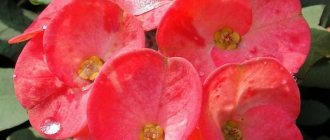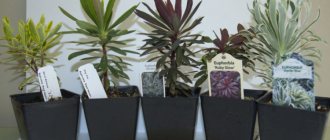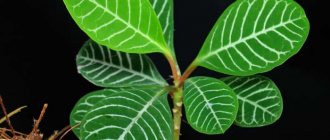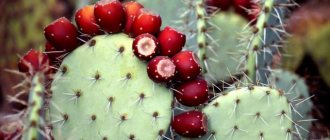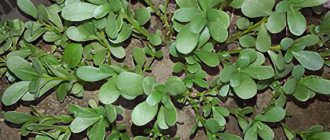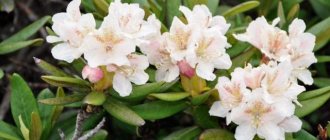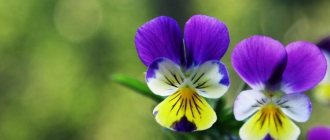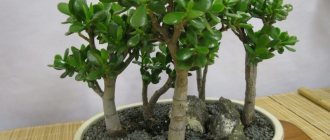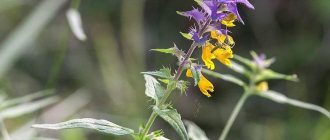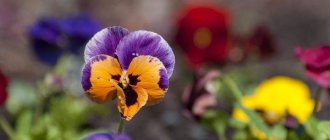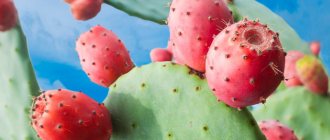Euphorbia: plant description
Euphorbia belongs to the Euphorbiaceae family; there are many species and subspecies of annual and perennial herbaceous plants, small trees and shrubs of this genus. The habitat of milkweed is observed in all areas of the continental and subtropical zone of the Earth. The plant received its name in honor of the Moorish physician Euphorbus, who was an expert in medicinal herbs and successfully used various plants for a variety of purposes. Thus, the juice of the Euphorbia plant was used by the doctor both as a medicine and as a poison, to eliminate unwanted people of the king, for whom he was in the service. The plant received its name in Russian because of the appearance of the juice that is released from Euphorbia when the stems or leaves are damaged.
Treatment of diseases and pests
If the rules of care are violated, gardeners are faced with changes in the appearance of the house plant. Problems may also be associated with diseases and pests.
| Type of lesion | Ways to fight |
| Leaves are falling. Occurs due to violation of the irrigation regime, lack of phosphorus and hypothermia. | Normalize the temperature and number of watering procedures. They add fertilizer. |
| The stem is rotting. The reason is stagnation of water accompanied by low temperature. | Analyze the condition of the soil. When overwatering, inspect the root system for root rot. Rotten areas are cut off, the remaining ones are treated with a weak pink solution of potassium permanganate or a fungicide to avoid the development of a fungal infection. I replace the substrate with fresh one. Regulate the frequency of watering. |
| Withering and drying of foliage. Associated with lack of watering. | Normalize the watering regime, gradually moistening the soil with a small amount of water. |
| Brown or black spots. A sign of a fungal disease. | The plant is treated with a fungicidal preparation against the fungus. |
| The ends of the leaf blades turn yellow. Caused by overfeeding with calcium or overdrying of the soil. | The indoor flower is watered abundantly and the watering regime is restored. When overfeeding, stop applying fertilizers. |
| White cobwebs on vegetative mass. Indicates the appearance of a spider mite. | The foliage is washed with a soap solution (50 g per 1 liter of water) and treated with an insecticidal preparation - Akellik, Aktara |
| Deformation of foliage followed by drying out and falling off. Signs of a mealybug. | The fight is carried out similarly to the method of getting rid of spider mites, after collecting the insects by hand. |
| Pale yellow and silver stripes. Thrips traces. | The diseased plant is treated with insecticides - Fitoverma, Aktara. |
The benefits and harms of milkweed in the house
Euphorbia is a poisonous plant - its juice contains a large amount of substances that, if ingested, can cause severe poisoning. The juice of the plant can cause severe allergic reactions. Taking this into account, it is recommended to keep milkweed in homes where there are no pets or children, and replanting must be done with extreme caution.
All types of milkweed contain substances such as rubber, milky juice and resin. Despite the fact that scientists have not carried out a detailed biochemical analysis of the plant, it is known that the components of the milky juice include euphorbon and amorphous gum. Milkweed also contains coumarins (esters of hydroacids), flavonoids (polyphenolic compounds) and alkaloids (nitrogen-containing compounds).
Despite its poisonous properties, spurge is a medicinal plant - the roots, juice and herb are often used in the pharmaceutical industry as raw materials for medicines. The juice of the plant has an excellent diaphoretic, anti-inflammatory, diuretic and analgesic effect on the human body. Previously, in the absence of medicines, people treated animal and insect bites with milkweed juice, as well as long-term non-healing ulcers. Also, active enzymes in milkweed juice help cope with leukemia, providing an immunostimulating effect.
Tinctures from the roots of milkweed are used to treat skin diseases and stomach diseases, due to the content of large amounts of glycosides, tannins and saponins.
Preparation and storage
To properly collect flowers, you need to make sure that the plant being harvested is milkweed. After all, if you collect the wrong herb, it will not have the desired effect, and otherwise poisoning or other negative consequences may occur.
When harvesting the herb, spurge should not be allowed to include other medicinal plants. It is better to collect in areas where large quantities grow.
Folk recipes use the root, stems and juice. All these parts should be prepared separately. The juice is obtained from the fresh plant. Then it is evaporated in a water bath and placed in glass containers. Store blanks only in a cool place.
Euphorbia roots are harvested in early spring. This is done before the first leaves appear. You can also harvest them in late autumn, when the plant begins to wither. The dug up roots are cleaned of dirt, washed, treated with boiling water and dried at a temperature of 40 degrees.
The stems and grass of milkweed are collected before it blooms. After harvesting, the juice is squeezed out and the plant is laid out to dry.
Euphorbia flowers are harvested on rare occasions and then placed in places where the sun's rays do not reach. The finished raw materials are placed in glass jars for storage.
The dried plant can be stored for no more than 1 year. After this period, its medicinal properties are lost.
Video about the medicinal properties of milkweed
In addition to our article, we recommend that you watch a video about the healing properties of indoor milkweed.
Euphorbia is a popular houseplant today, despite the fact that it is considered poisonous and dangerous. He was loved by flower growers for his unpretentiousness and original shapes. A huge number of varieties of culture will allow everyone to choose according to their taste.
Euphorbia has about 2000 species of the family. Among them you can find succulent forms, shrubs, trees and leafy specimens. They all differ in the shape of leaves and stems.
However, there are no fundamental differences in caring for them. Care is simple. Even beginners in floriculture can grow it. Another peculiarity of the plant is that it secretes milky sap . The culture is often used in medicine. At the same time, it is poisonous .
Euphorbia is also called euphorbia . The plant received its name from the doctor Euphorbus, who was the first to discover the healing properties of the plant.
Most species have dense, fleshy stems and leaves. The stems may have thorns. At home, the species most often grown is called the Most Beautiful Euphorbia. This plant is also called poinsettia.
Also popular indoor milkweeds are Mila and Triangular.
Purchase and adaptation period
The flower brings happiness
Many flower growers are in no hurry to buy milkweed for their home, and this is due to the superstitions that exist around flower culture. Some people associate cactus-like varieties with spines with aggravation of family relationships.
However, those who have long practiced growing succulents at home are sure that holding one is a good omen and it brings happiness. The flower has positive energy and is able to protect the house from danger and maintain good relationships in the family.
When purchasing a houseplant, you should pay attention to its appearance. In healthy milkweed
- bright foliage;
- no stains or signs of pests;
- root system without damage.
The price of euphorbia depends on the variety and starts from 100 rubles.
After purchase, the flower crop is given time to adapt, about 2 weeks, during which it is not replanted or fed. After this period, the succulent needs replanting and properly selected care.
Caring for indoor spurge
Indoor spurge rarely causes difficulties for its owners. That's why he is called unpretentious. However, a number of rules will help in growing a beautiful and healthy flower. In order for a flower to look good, it must be looked after and replanted in time if necessary.
Humidity and watering
In summer, euphorbium needs regular and abundant watering . At the same time, you cannot overwater the plant; this is dangerous due to stagnation of water.
With the arrival of autumn, the amount of watering is reduced. In winter, the crop is watered only as needed. However, the soil should not be allowed to dry out too much. At the same time, some types of indoor euphorbias do not need winter watering at all.
Excess moisture at low indoor temperatures can lead to leaf drop and horse rot, which can lead to the death of the plant.
The crop does not need too humid air, but it does not like dry air either. Therefore, it is important to monitor moderate air humidity.
Watering milkweed
During hot periods, it is recommended to spray the leaves with water at room temperature and periodically ventilate the room. In winter, spraying is not necessary. However, the plant should be kept away from heating radiators and turned on heaters.
Temperature and lighting
Euphorbia prefers warmth . Therefore, it is necessary to keep the culture at an air temperature of 18 to 25 degrees.
In hot summer, it is advisable to take the plant out into the open air. A courtyard, open loggia or veranda will do. If the temperature drops to 15 degrees, it must be returned to the apartment.
Some varieties of the crop can tolerate very low temperatures of up to 4 degrees Celsius, but they also need good lighting.
The flower loves light . Some specimens do not mind basking in direct sunlight. Others prefer diffused light. The latter, for example, includes pounsettia.
The culture can also be kept in shaded areas. However, the leaves will not be as rich and bright as when growing in the sun.
Soil and fertilizers for euphorbia
For milkweed, you can purchase soil at specialized flower shops. Euphorbia soil is suitable for succulents or cacti . At the same time, experienced gardeners prefer to prepare the soil themselves.
Suitable soil for succulents for planting milkweed
For preparation you will need the following components:
- Turf land;
- Sand;
- Humus from leaves.
All components are taken in equal shares.
also necessary to make a drainage layer . You can use small pebbles, polystyrene foam or expanded clay as drainage. Drainage is necessary to ensure that moisture does not stagnate in the soil. This is fraught with rotting of the plant's root system.
Despite its general unpretentiousness, it still requires feeding. Typically, fertilizer is applied once every two weeks during vegetative growth. Fertilizers that can be used include fertilizers designed for succulent crops and cacti. For flowering milkweeds, it is necessary to apply fertilizers containing potassium.
No fertilizing is required in the autumn and winter.
Choosing a pot
You need to approach the choice of pot responsibly. It is advisable to choose clay pots . However, plastic containers will also work. The pot should be shallow, since the root system is poorly developed and is located near the surface of the soil.
When replanting a crop, select a pot slightly wider in diameter. A difference of 2-3 cm is enough.
It is very important that there are drainage holes at the bottom of the pot to drain excess moisture.
Euphorbia plant diseases and pests
Sometimes the owner has to face some problems. These usually occur due to improper care.
The most common:
- Leaf falling is a sign of phosphorus deficiency . To solve the problem, superphosphate is used as a top dressing;
- The falling of the lower leaves of the plant indicates insufficient watering ;
- Excessive watering coupled with low air temperature in the room leads to rotting of the stems In addition to increasing the temperature and reducing watering, the plant must be treated with fungicidal preparations;
- Darkening of the leaves is a consequence of lack of lighting ;
- Black and brown spots on leaves are a fungal disease . The plant must be immediately treated with a fungicidal preparation;
- If the leaves wither, then the flower needs to be watered more often and more abundantly.
The most common pests:
- Shchitovka;
- Mealybug;
- Spider mite;
- Root mealybug.
A sign of a flower being damaged by a mealybug is a white coating on the plant . A soap solution will help get rid of the pest. It wouldn’t hurt to add a little machine oil to it. Also, mealybug does not tolerate infusions of calendula and garlic.
The scale leaves white and brown spots on the leaves. It will have to be combated with the help of insecticidal preparations, for example Aktara.
Aktara will help control pests
A white coating on the underside of the leaves is a spider mite infestation . Wiping with a soapy solution helps;
root scale insects be determined when replanting white-veined milkweed. They need to be washed off with hot water. And after transplanting the renewed substrate, it is recommended to water the crop once a week with Aktara for a month.
Flower pruning at home
The purpose of pruning is to give the plant a beautiful shape and rejuvenation . Pruning is required either at the beginning of the growing season or in July, when the flowering period ends.
Initially, dry and old shoots are removed, and then the plant is given a beautiful shape.
In the year when pruning was done, euphorbia will not bloom. But next year it will be twice as abundant.
Reproduction
Indoor spurge can be propagated in three ways:
- Seeds;
- Cuttings;
- Dividing the bush.
You can collect seeds for propagation yourself. In this case, you will have to wrap the pods with seeds in a woven material in the form of a bag. This is necessary to prevent the seeds that have ripened in the pods from scattering. Such seeds can be stored for no more than one year. It is much better to sow fresh seeds.
To plant seeds, you will need soil containing peat and sand. Before sowing, it would be a good idea to heat the substrate in the oven. This will reduce the chance of developing an infection.
Before sowing the seeds, they must be soaked in water for 24 hours. Then they are sown in the soil in a moist state. The top of the crops must be covered with plastic film or glass to create a greenhouse effect.
Propagation by cuttings is carried out in the autumn. A shoot of a leaf node measuring about 10 cm is used as a cutting. All lower leaves must be removed from the shoot. Then the shoots are lowered into water to wash off the juice that the spurge secretes. The cut areas need to be treated with crushed coal.
Then the processed and dried shoots are placed in the ground in the form of sand. It is recommended to cover the seedlings with cut plastic bottles. It is not recommended to allow direct exposure to sunlight. The soil must be kept moist at all times.
Propagation of white-veined milkweed by dividing the bush is necessary during the dormant period of the crop. The milkweed is completely removed from the pot. The rhizome of the plant must be divided into several parts. It is necessary to ensure that there are no rotten roots on the rhizome. Then the finished shoots are planted in separate containers.
How to transplant
Basic rules for transplanting milkweed:
- The crop is replanted in the spring;
- A young plant must be replanted once a year during the period of active growth;
- Adult specimens only need to be replanted once every two years ;
- The pot for the transplanted flower should be slightly wider in diameter.
The plant should not be replanted unless necessary.
Planting and transplanting
The container for planting is selected depending on the area of the root system, with a diameter of 5 cm larger. Tall varieties require stable, deep pots. The presence of drainage holes is mandatory.
The material can be any, and the frequency of watering depends on it:
- the substrate in clay and ceramic potted containers without an external paint coating allows air and water to pass through well, because their walls are porous, so moisture evaporates from them faster;
- plastic pots are convenient for transplanting, because... capable of deformation, but do not allow moisture to leave the soil, only from its surface layer, and the risk of water stagnation and the development of rotting of the root system increases.
Young plants need annual replanting, which is required for normal growth of the root system. Adult succulents are replanted once every 2-3 years, and for old ones they are limited to replacing the top layer of the substrate to a depth of 5 cm.
What are the dangers, harms and benefits?
The plant is poisonous , so it must be used very carefully. If there are small children in the house, then spurge must be kept away from them - it can cause harm.
Why is it dangerous?
All types of milkweed are capable of secreting milky sap. It is very poisonous and dangerous . This juice is on the first line of all toxic products released by plant crops. Milky sap poses a danger not only to small children, but also to adults, people with allergies and pets.
Milkweed juice is extremely dangerous
Skin burn
Contact of harmful milky juice with the skin can cause severe burns and inflammation . The formation of rashes and allergic reactions is likely.
If the juice gets on the skin, it is recommended to thoroughly rinse the burned area with water and apply a piece of ice. It is also recommended to take an antihistamine (anti-allergy) drug.
Getting poisonous juice into the eyes
Getting milky juice into the eyes is very dangerous due to temporary or permanent blindness . If this has already happened, then you should immediately contact a specialist. Before seeing a doctor, you must rinse your eyes and apply antiallergic drops.
Kromhexal is suitable for these purposes. These drops are effective against redness. To prevent infection, it will not be superfluous to instill Albucid. You can also lubricate your eyelids with erythromycin ointment. In any case, you need to be extremely careful with the culture.
Drops for washing eyes in case of contact with milky juice
Getting into the mouth or inside
Milky sap is very dangerous in these cases. The following symptoms are likely:
- Dizziness;
- Nausea and vomiting;
- Breathing problems;
- Decreased body temperature;
- Swelling of the tongue;
- The appearance of seizures;
- Fainting conditions.
First aid
At the first signs of poisoning, you need to immediately call a specialist .
Before the doctor comes, it is recommended:
- Take activated carbon. For high-quality gastric lavage, it can be dissolved in sodium bicarbonate;
- If vomiting occurs, it is recommended to swallow pieces of ice;
- Use sodium or magnesium laxatives internally;
- Give an enema.
If an allergic reaction is observed, then you need to take an antihistamine.
Ways to combat milkweed
Euphorbia is a weed, so there are several methods for controlling it. They use traditional methods or modern drugs. Sometimes both methods are used.
It is best to start fighting the weed in early spring, when the leaves are just appearing on the plant. It is imperative to pull out the grass by the roots, without leaving even a single particle of it in the ground. If this is not done, the spurge will germinate in the soil again.
When fighting a plant, it is completely pulled out along with the roots.
The second method used to control field spurge grass is the use of herbicides. By combining these two methods together, you can completely get rid of weeds in your garden.
Beneficial features
Euphorbia has a number of beneficial properties. Because of this, the plant is often used in alternative medicine .
What are the benefits of milkweed?
Euphorbia can have a tonic and stimulating effect . It is also an effective means of cleansing blood vessels.
Herbal collection of milkweed
Euphorbia is effective for constipation and will be beneficial for diseases of the gastrointestinal tract. It also has an antitumor effect. The milky juice is often used to remove warts and calluses. Effective for cleansing the face of blemishes.
Lotions made from milkweed juice are effective in treating burns and boils .
Compound
The composition of milkweed includes the following components:
- Flavonoids;
- Saponins;
- Tannins;
- Ascorbic acid;
- Starch;
- Glycosides and resins.
Use in medicine
Euphorbia tincture is effective for blood cancer, for the treatment of metastatic tumors in cancer. The tincture is also extremely effective in boosting immunity.
To prepare the tincture you will need:
- 10 g of roots, crushed;
- 500 g vodka.
You need to use the tincture three times a day, 15 drops .
Euphorbia tincture
This recipe is also effective for impotence, uterine fibroids, stomach diseases, fungal infections, and whooping cough. Small doses of milkweed juice are effective for strengthening the body and rejuvenating.
The juice is very poisonous, so you should not ingest it without knowing the recipe.
are not used for medicinal purposes .
Milkweed roots are collected when the above-ground part of the crop withers. After washing and drying, the roots can be used to prepare decoctions and tinctures. Decoctions from the roots are effective against vomiting and diarrhea.
Euphorbia honey is a unique type of honey in its composition. It is a brown syrup. The brown color is due to the high iodine content. It is used to treat thyroid diseases, gastritis, insomnia and varicose veins.
Euphorbia is an original and ornamental plant. It is unpretentious. The most inexperienced gardener can afford to care for milkweed. Euphorbia secretes juice that is poisonous and dangerous to humans and animals. Moreover, the plant is often used in folk medicine.
Do you also have this stylish striped flower growing on your windowsill at home? This is white-veined spurge, indoor spurge. He is very handsome, captivating with his clear lines and proud posture. The gaze is sure to linger on it.
Origin of milkweed.
The subtropics of Africa and America are considered the homeland of euphorbias. The plant is also found in the Canary Islands and Madagascar.
Euphorbia belongs to the succulent family, with about 2,000 species.
At home, they grow beautiful spurge (poinsettia), mile spurge, tiruccali spurge, fat spurge, multifaceted spurge, large-horned spurge and - the most popular indoor spurge - white-veined spurge. Just like yours, like mine on the windowsill.
White-veined milkweed (Euphorbia leuconeura) - one of the most popular among gardeners - has a ribbed, usually unbranched stem 40-60 cm high. From the bottom of the thickened trunk, the leaves usually fall off and remain at the top of the plant. For this reason, spurge is often called “palm tree”. The indoor spurge plant blooms quite often at home.
Reproduction methods
At home, euphorbias can be propagated in one of the possible ways - seeds, dividing the bush and cuttings.
Seminal
Seeds are grown mainly for spherical varieties, in which cuttings are difficult to carry out due to their structure.
Seed material is planted in a mixture of leaf soil and sand, deepened by 0.5-1.0 cm. Maintaining a uniform temperature of about 18°C helps to speed up germination.
When the first shoots appear, it is necessary to make a pick and plant the seedlings in individual containers.
Cuttings
Preparations from succulents over 2 years old are suitable for propagation. For propagation, the tops, about 15 cm long, are cut off, which are left in the open air for 2 days to wilt, after which they are planted in a sand mixture for rooting.
As a strong root system develops, the cuttings can be planted in separate pots. Subsequently, they are cared for as adult plants.
Dividing the bush
An adult plant is suitable for division
For propagation by dividing an adult plant, varieties that have a well-developed root system that can divide into parts are suitable. The roots are cut with a sharp object and the cuttings are planted in the substrate.
Caring for milkweed.
A very unpretentious plant, durable. Euphorbia requires almost no care. Very decorative. Watering is moderate, once a month is enough in winter. They love spraying. The optimal air temperature for milkweed in summer is 20-25 degrees, in winter - 12-16. Our house is equally warm in summer and winter. Plants grow without complications. I just water it quite often all winter so that the soil doesn’t have time to dry out. The plant loves sunlight very much, you can safely move it to the first line, closer to the glass. Of course, it is better to place it on a more illuminated windowsill. Flowering euphorbias are watered more often and be sure to be fed with potassium or complex fertilizer. Non-flowering milkweeds can be fed with cactus fertilizer.
Euphorbia grows well in a mixture of peat, sand, leaf soil, and turf soil. You can add brick chips to the sand. The mixture for seedlings is made up in equal proportions.
Propagated by seeds (most often by self-sowing) and shoots. After separation from the plant, it is advisable to dry the shoot before planting.
Euphorbia greatly appreciates care and responds gratefully to the love and warmth of its owners. Its slender bushes are pleasing to the eye.
Now the children have grown up and I got a new little milkweed - it still needs to grow and grow.
spurge is poisonous
Here it is, my baby white-veined milkweed.
Poisonous houseplant spurge.
Euphorbia - benefit or harm from this plant?
Be careful! Any milkweed is dangerous! Euphorbia is poisonous !!! It is imperative to instruct children how to handle this plant. If children are small or unruly or unpredictable, spurge should be placed higher up, out of reach. Euphorbia can cause considerable harm!!!
The fact is that these plants, when cut, broken, or simply separating a leaf, secrete a white juice - very unusual and quite attractive for research - such a white drop... This juice, if it gets on the skin or mucous membrane, causes a severe chemical burn. When I had small children, I simply threw out my gorgeous tall perennial milkweed - I was so scared by the information I read on the Internet. I then looked for the name of this plant and found an article that told how a teenage girl smeared the juice of this poisonous houseplant on her face. The consequences were some terrible - not just the skin peeled off and a new one appeared - some more permanent changes, even to the point of scarring. Overall, this is just another example that there are poisonous houseplants.
Euphorbia - benefits.
Euphorbia also has beneficial uses - it is a medicinal plant.
In pharmacies, milkweed is sold as a dietary supplement.
In Russia, milkweed has long been used to get rid of warts, age spots and dry calluses, i.e. for the treatment of skin diseases. Euphorbia is also used as a laxative to treat problems with the digestive system. In addition, this plant is also used in the treatment of inflammation of the oral cavity, in particular pulpitis. Used as an analgesic, antifungal, antiviral agent.
Of course, all these problems must be treated with caution, strictly following the recipe and remembering that there are poisonous plants in nature that can be beneficial if certain conditions are met. These are not completely harmless plants, so you need to be very careful!
You can read more about milkweed here and HERE.
Euphorbia is the only plant in the Euphorbiaceae family, but it has a huge variety of species and varieties. In the wild, this flower is represented by annual and perennial herbaceous species, subshrubs and low-growing trees. In its natural environment, it can be found in countries with tropical, subtropical and temperate climates.
Euphorbia gets its name from the thick milky sap that is released from its leaves and stems as a result of their damage. Many gardeners are interested in what the indoor spurge flower brings into the house?
Care precautions
Caring for indoor milkweed cannot be called too difficult, since it does not require increased attention. However, it is still worth observing some safety measures to prevent the harmful effects of the plant on the body:
- Any manipulations carried out with the plant (especially pruning and replanting) should be carried out only with thick protective gloves. They should be made of rubber (the fabric can absorb juice, which will eventually end up on the skin).
- Even when wearing gloves, you should thoroughly wash your hands with soap and water after each contact with milkweed.
- Do not neglect additional protective equipment: glasses and face masks. Even the safest procedure can damage the plant and lead to the release of juice from its tissues.
- All garden tools should be washed with cleaning products immediately after finishing work with milkweed.
